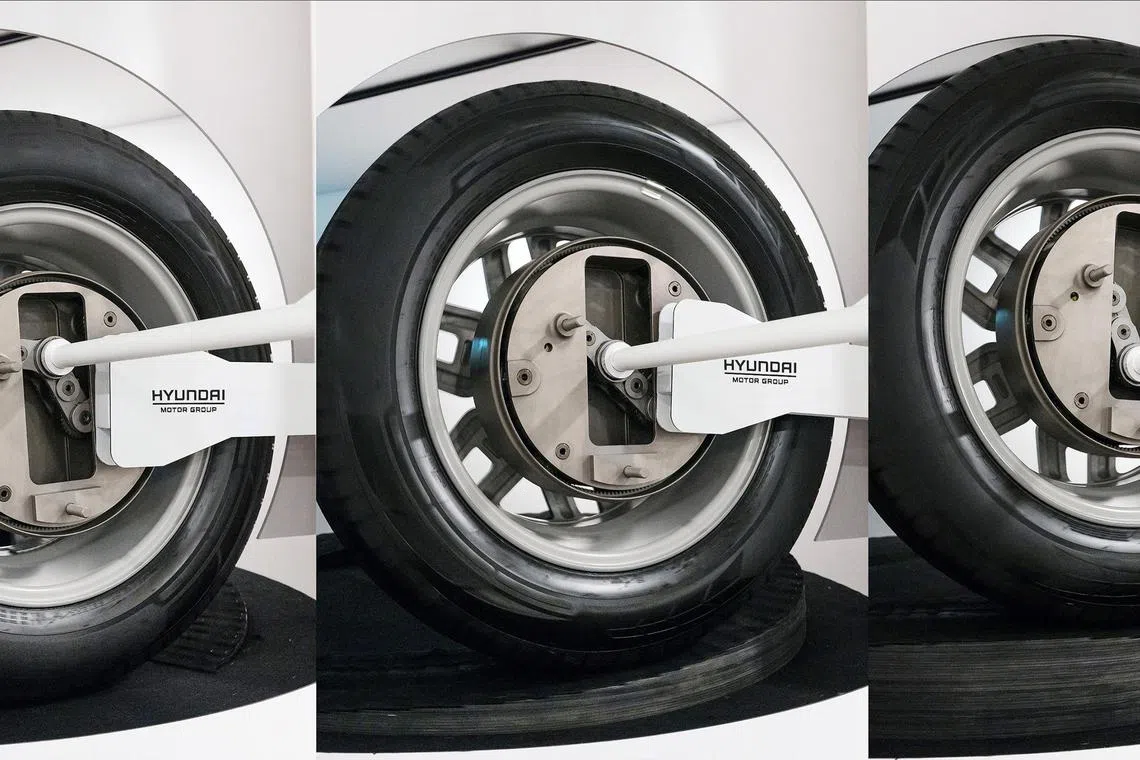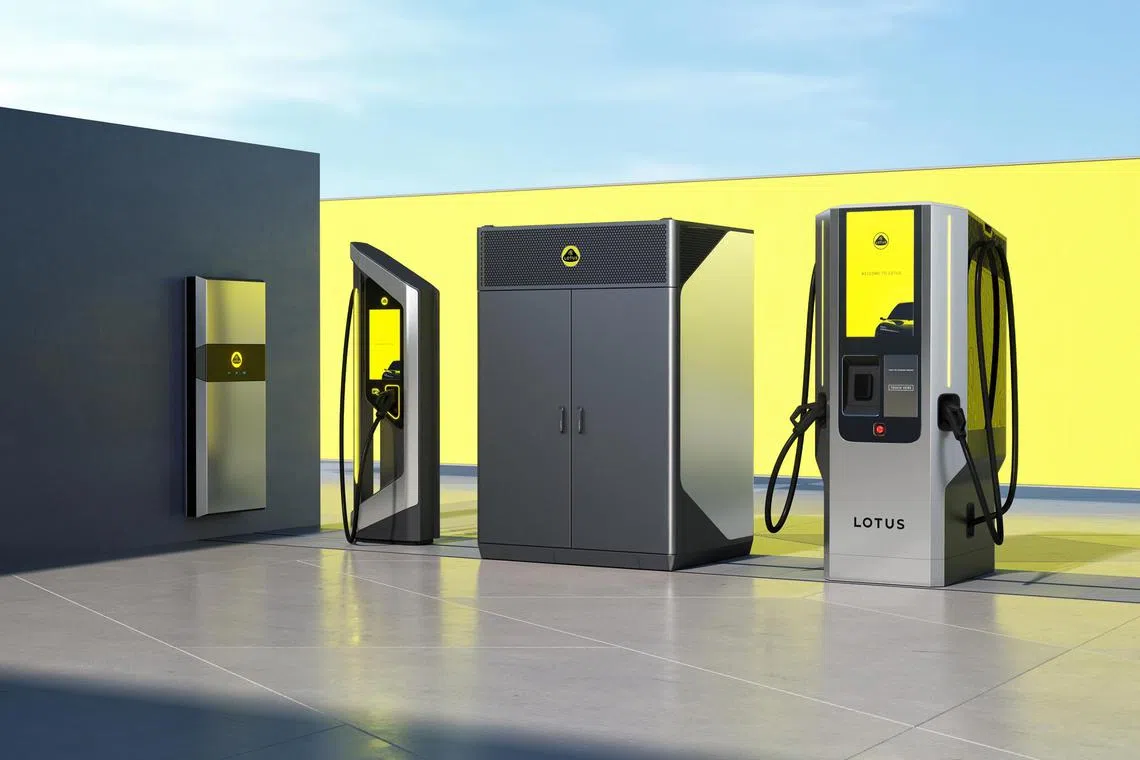Fast Lane: Tesla Cybertruck delivery starts, S’pore logistics firm studies hydrogen use with Hyundai
Sign up now: Get ST's newsletters delivered to your inbox

Clean sheets: Tesla’s slab-sided Cybertruck on display at a Tesla store in San Diego, California, on Nov 20.
PHOTO: REUTERS
Follow topic:
Controversial Cybertruck to finally hit the road, far costlier than expected
Tesla’s long-delayed Cybertruck will be priced starting at US$60,990 (S$81,450), or around the cost of a BMW i5, and more than 50 per cent higher than what Tesla chief Elon Musk had touted in 2019, Reuters reported.
The truck, made of shiny stainless steel and shaped into flat planes, and powered by three motors, clocks 0-100kmh in under three seconds. Its body material and unconventional styling have added complexity and costs to production, and threaten to alienate traditional pickup truck buyers who focus on utility, experts say.
But Mr Musk, who has priced the vehicle’s three variants between US$60,990 and US$99,990, said on Nov 30 at a ceremony in Austin, Texas, to deliver the first dozen trucks to customers, that the Cybertruck has “more utility than a truck” and is “faster than a sports car”.
The truck, which weighs more than three tonnes, is said to have garnered one million orders. It is not slated to be exported to markets outside the United States.
Kia, Hyundai to put EV reduction gear in wheel

Where there’s a wheel, there’s a way: Hyundai-Kia’s universal wheel drive system.
PHOTO: HYUNDAI MOTOR GROUP
Kia and Hyundai Motor have unveiled their take on the wheel hub electric motor. Their so-called Universal Wheel Drive System (Uni Wheel) is an integrated wheel drive system that frees up space in an electric vehicle (EV) by moving the main drive system components to inside the wheel hub.
Uni Wheel moves an EV’s reduction gear inside the wheel hub, placing a compact individual motor close to each wheel, which reduces the length of the drive shafts.
Lotus launches 450kW liquid-cooled chargers

Superpower chargers: Lotus’s 450kW liquid-cooled chargers.
PHOTO: LOTUS CARS
Lotus has unveiled a liquid-cooled high-performance electric vehicle charging system in China. Its 450kW DC charger can charge up to four vehicles at once.
The newly launched Lotus Eletre R can add up to 142km of range with about five minutes of charge, while a 10 per cent to 80 per cent charge can be achieved in just 20 minutes. Lotus expects to roll out the system in Europe and the Middle East by the second quarter of 2024, but there are no plans for it in the Asia-Pacific region.
Hyundai, S’pore logistics firm sign hydrogen MOU

Using hydrogen to make electricity: Hyundai Xcient Fuel Cell truck.
PHOTO: HYUNDAI MOTOR
Hyundai Motor has signed a memorandum of understanding (MOU) with home-grown Poh Tiong Choon Logistics to establish an ecosystem for hydrogen-based mobility in Singapore. With this MOU, Hyundai Motor will discover business opportunities related to the hydrogen ecosystem in Singapore.
Both parties will collaborate to combine their expertise, experience and resources to develop and build a hydrogen ecosystem (not limited solely to hydrogen-based mobility), from production to utilisation.
Hyundai’s Xcient Fuel Cell truck – the world’s first commercialised fuel cell heavy-duty truck – was launched in 2020 and has been deployed in Switzerland, Germany, Israel, South Korea, New Zealand and the US.
Global standard adopted for wireless EV charging
Inductive or wireless charging of EVs is convenient, as there is no need to fiddle with cables or search for a charging station with a suitable plug.
German mobility group Mahle has developed a positioning system that allows an EV to be simply, reliably and precisely aligned above the charging coil in the floor.
SAE International (formerly Society of Automotive Engineers) has chosen the Mahle system as the global standard solution for wireless charging. The US-based international standards-setting association’s move is seen to be paving the way for the roll-out of this wireless charging solution, which has not been popular because of factors such as a lack of uniform standards, transmission losses and cost.


